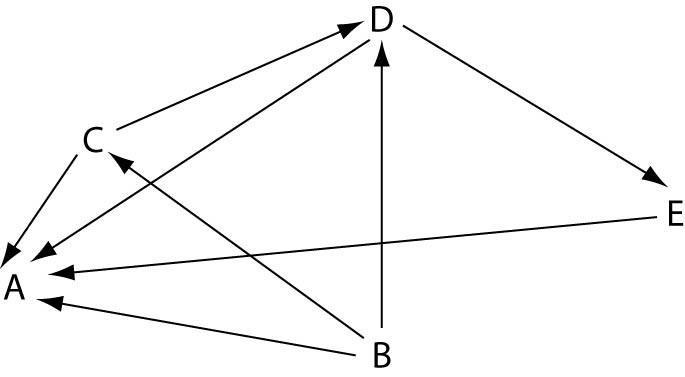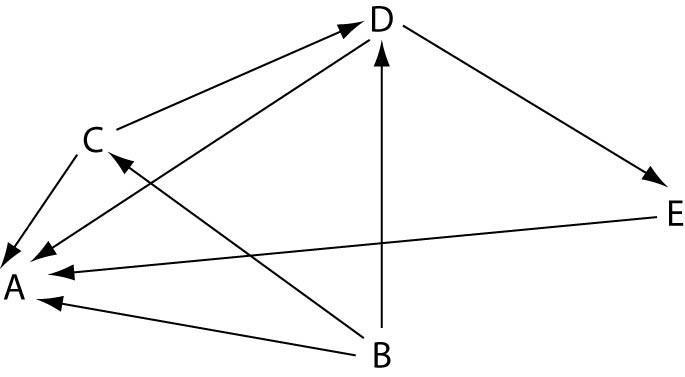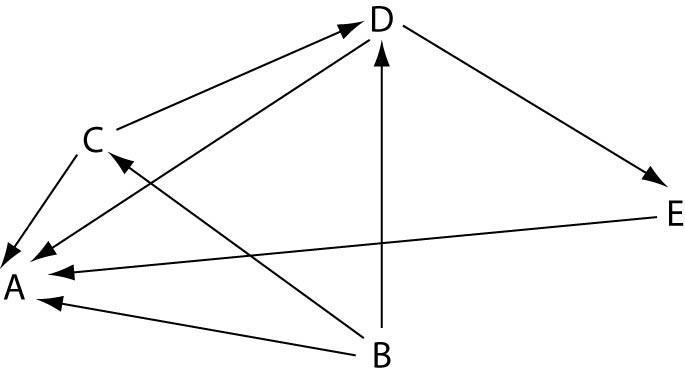Instructions for Side by Side Printing
- Print the notecards
- Fold each page in half along the solid vertical line
- Cut out the notecards by cutting along each horizontal dotted line
- Optional: Glue, tape or staple the ends of each notecard together
Chp.54
front 1 Strong competition can lead to _________ _________, local elimination of a competing species. | back 1 competitive exclusion |
front 2 __________ _________, or camouflage, makes prey difficult to spot. | back 2 cryptic coloration |
front 3 Animals with effective chemical defense often exhibit bright warning coloration, called __________ _________. | back 3 aposematic coloration |
front 4 __________ mimicry: a harmless species mimics a harmful one. | back 4 Batesian |
front 5 ________ mimicry: two unpalatable species mimic each other. | back 5 Müllerian |
front 6 In _________, one organism, the parasite, derives nourishment from another organism, its host, which is harmed in the process. | back 6 parasitism |
front 7 ________ is an interspecific interaction that benefits both species. | back 7 mutualism |
front 8 __________: the relation between two different kinds of organisms when one receives benefits from the other without damaging it. | back 8 Commensalism |
front 9 ________ __________ is the total number of different species in the community. | back 9 Species richness |
front 10 ________ _________ of a community is the variety of organisms that make up the community. | back 10 Species diversity |
front 11 _________ _________ is the proportion each species represents of the total individuals in the community. | back 11 Relative abundance |
front 12 __________ _________ is the feeding relationships between organisms in a community. It is a key factor in community dynamics. | back 12 Trophic structure |
front 13 _________ _________ are those that are most abundant or have the highest biomass. | back 13 Dominant species |
front 14 _________ ________ are not necessarily abundant in a community. | back 14 keystone species |
front 15 Some ________ _______ act as facilitators that have positive effects on survival and reproduction of some other species in the community. | back 15 foundation species |
front 16 The __________ model of community organization proposes a unidirectional influence from lower to higher trophic levels. In this case, presence or absence of mineral nutrients determines community structure, including abundance of primary producers. | back 16 bottom-up |
front 17 The ______ model proposes that control comes from the trophic level above. | back 17 top-down |
front 18 Which of the following statements is consistent with the principle of
competitive exclusion? | back 18 Answer: D |
front 19 According to the competitive exclusion principle, two species cannot
continue to occupy the same | back 19 Answer: B |
front 20 Which of the following is an example of cryptic
coloration? | back 20 Answer: E |
front 21 Which of the following is an example of Müllerian
mimicry? | back 21 Answer: A |
front 22 Which of the following is an example of Batesian
mimicry? | back 22 Answer: C |
front 23 Which of the following is an example of aposematic coloration?
| back 23 Answer: A |
front 24 Dwarf mistletoes are flowering plants that grow on certain forest
trees. They obtain nutrients and water from the vascular tissues of
the trees. The trees derive no known benefits from the dwarf
mistletoes. Which of the following best describes the interactions
between dwarf mistletoes and trees? | back 24 Answer: B |
front 25 Evidence shows that some grasses benefit from being grazed. Which of
the following terms would best describe this plant-herbivore
interaction? | back 25 Answer: A |
front 26 Which of the following would be most significant in understanding the
structure of an ecological community? | back 26 Answer: E |
front 27 Which of the following studies would a community ecologist undertake
to learn about competitive interactions? | back 27 Answer: E |
front 28 White-breasted nuthatches and Downy woodpeckers both eat insects that
hide in the furrows of bark in hardwood trees. The Downy woodpecker
searches for insects by hunting from the bottom of the tree trunk to
the top, whereas the white-breasted nuthatch searches from the top of
the trunk down. These hunting behaviors best illustrate which of the
following ecological concepts? | back 28 Answer: B |
front 29 Monarch butterflies are protected from birds and other predators
because of cardiac glycosides they incorporate into their tissues from
eating milkweed when they were in their caterpillar stage. The wings
of a different species of butterfly, the Viceroy, look nearly
identical to the Monarch so predators that have learned not to eat the
bad-tasting Monarch avoid Viceroys as well. This example best
describes | back 29 Answer: C |
front 30 Prairie dogs once covered the expanses of the Great Plains. Their
grazing made the grass more nutritious for the huge herds of bison,
and they were preyed upon by a variety of snakes, raptors, and
mammals. In fact, the black-footed ferret (now endangered) specialized
in prairie dog predation. Today, increases in housing and agricultural
developments have eradicated many prairie dog towns. Which of the
following statements about prairie dogs is true? | back 30 Answer: E |
front 31 Which statement best describes the evolutionary significance of
mutualism? | back 31 Answer: C |
front 32 How might an ecologist test whether a species is occupying its
realized or its fundamental niche? | back 32 Answer: E |
front 33 Which of the following terms is used by ecologists to describe the
community interaction where one organism makes the environment more
suitable for another organism? | back 33 Answer: D |
front 34 How did Eugene Odum describe an ecological niche? | back 34 Answer: C |
front 35 Approximately how many kg of carnivore biomass can be supported by a
field plot containing 1,000 kg of plant material? | back 35 Answer: D |
front 36 In a tide pool, 15 species of invertebrates were reduced to eight
after one species was removed. The species removed was likely a(n)
| back 36 Answer: B |
front 37 Elephants are not the most dominant species in African grasslands,
yet they influence community structure. The grasslands contain
scattered woody plants, but they are kept in check by the uprooting
activities of the elephants. Take away the elephants, and the
grasslands convert to forests or to shrublands. The newly growing
forests support fewer species than the previous grasslands. Which of
the following describes why elephants are the keystone species in this
scenario? | back 37 Answer: A |
front 38 Why are food chains relatively short? | back 38 Answer: C |
front 39 Which term do ecologists use to describe the ability of a community
either to resist change or to recover to its original state after
change? | back 39 Answer: A |
front 40 In a particular case of secondary succession, three species of wild
grass all invaded a field. By the second season, a single species
dominated the field. A possible factor in this secondary succession
was | back 40 Answer: D |
front 41 Why do moderate levels of disturbance result in an increase in
community diversity? | back 41 Answer: A |
front 42 Species richness increases | back 42 Answer: B |
front 43 There are more species in tropical areas than in places more distant
from the equator. This is probably a result of | back 43 Answer: B |
front 44 A community's actual evapotranspiration is a reflection of | back 44 Answer: A |
front 45 Why do tropical communities tend to have greater species diversity
than temperate or polar communities? | back 45 Answer: D |
front 46 Why is a pathogen generally more virulent in a new habitat? | back 46 Answer: D |
front 47 During the course of the formation of a parasite/host relationship, a
critical first step in this evolution would be | back 47 Answer: C |
front 48  Which letter represents an organism that could be a carnivore?
| back 48 Answer: E |
front 49  Which letter represents an organism that could be a producer?
| back 49 Answer: B |
front 50  Which letter represents an organism that could be a primary consumer?
| back 50 Answer: C |
front 51 Which of the following would be considered a keystone
species in McDonaldland? | back 51 Answer: A |
front 52 Which two "species" are likely to compete for the same
ecological niche? | back 52 Answer: E |
front 53 According to the McDonaldland scenario, which of the following would
best define an ecological community? | back 53 Answer: B |
front 54 In a two-week marketing analysis, McDonald's was interested in
finding out the popularity of the Big Mac. Using the
realized/fundamental niche concept of community
ecology, what should the marketing researchers do? | back 54 Answer: C |
front 55 The feeding relationships among the species in a community determine
the community's | back 55 Answer: E |
front 56 The principle of competitive exclusion states that | back 56 Answer: D |
front 57 Keystone predators can maintain species diversity in a community if
they | back 57 Answer: B |
front 58 The most plausible hypothesis to explain why species richness is
higher in tropical than in temperate regions is that | back 58 Answer: B |